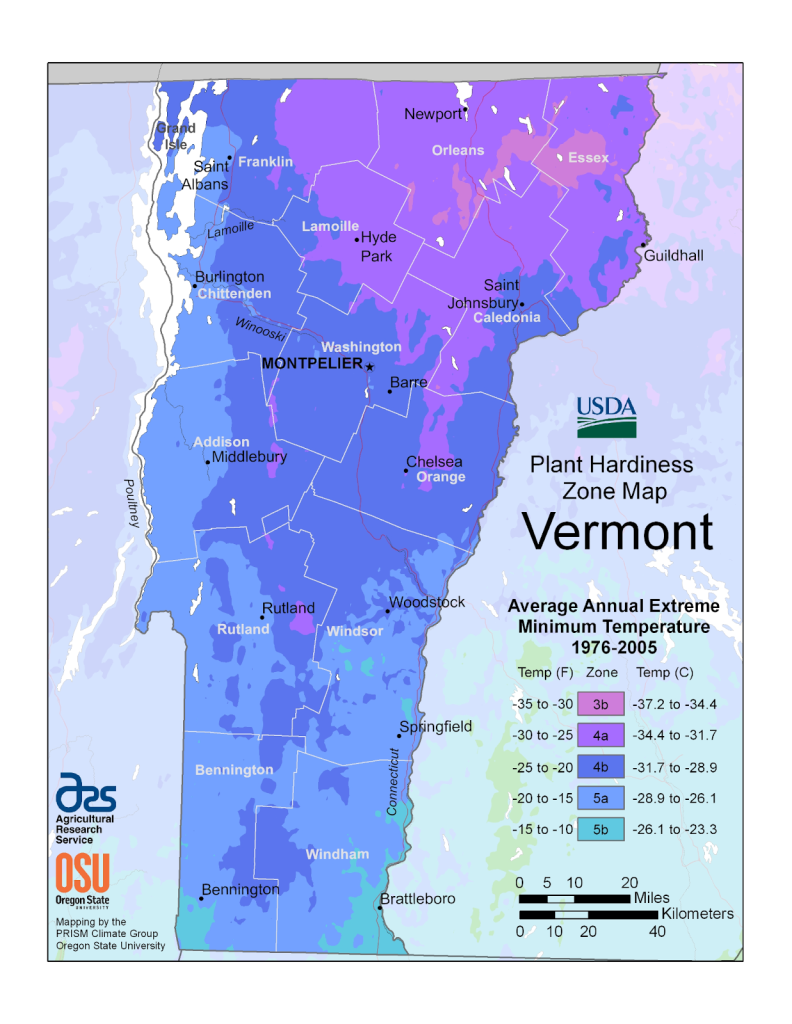Mastering Tropical Plants in Vermont
Nestled within the serene embrace of Vermont’s rolling hills and idyllic countryside, the concept of cultivating tropical plants in this New England state may initially appear as unconventional as it is captivating. Vermont’s characteristic four-season climate and natural beauty create a canvas that offers a unique challenge and opportunity for horticultural enthusiasts. In this article, we embark on a verdant journey into the world of tropical plants for Vermont, exploring the possibilities and nuances of creating a lush Vermont garden that boasts a touch of the tropics. From deciphering Vermont’s growing zones to unveiling the secrets of nurturing Vermont tropical plants, we’ll provide you with the knowledge and inspiration to transform your garden into a thriving oasis, where the exotic and the rustic harmoniously coexist.
Growing Tropical Plants in Vermont
Growing tropical plants in Vermont, which is in USDA Hardiness Zones 3 to 5, can be quite challenging due to the state’s harsh winters and cool summers. To enjoy more delicate tropical plants, consider container gardening so plants can be moved indoors during colder months. However, with the right selection of hardy species, you can bring a taste of the tropics to your Vermont garden.
These plants require well-draining soil, adequate sunlight, consistent watering, and nutrients to thrive. Utilizing sheltered spots in the landscape can offer additional protection from frost and temperature fluctuations. With proper care, Vermont gardeners can enjoy the rich colors and diverse textures of tropical plants, creating lush, exotic garden spaces.
Vermont Tropical Plants
Embarking on a botanical journey through the scenic landscapes of Vermont, we discover a world where the concept of tropical plants may seem at odds with the state’s rustic charm. Yet, Vermont’s unique climate and environment offer opportunities for cultivating an array of exotic flora. In this section, we’ll explore the art of growing tropical plants in Vermont and introduce you to three remarkable species that can thrive in the Green Mountain State. Whether you’re a seasoned horticulturist or a newcomer to gardening, you’ll find valuable insights on how to create a tropical haven right in your Vermont garden.
Chinese Fan Palm
Chinese Fan Palm, scientifically known as Livistona chinensis, is a popular and elegant palm species often used in landscaping and indoor settings. With its fan-shaped leaves and slender, tall trunk, it creates a tropical and exotic ambiance. This palm is native to Southern Japan, Taiwan, and parts of China and is highly valued for its adaptability to various environments. It can grow up to 30 feet tall, forming a graceful canopy of lush, green foliage. The Chinese Fan Palm is relatively low-maintenance, making it a favorite choice for both experienced and novice gardeners looking to add a touch of the exotic to their spaces.
When growing the Chinese Fan Palm, it’s important to provide it with well-draining soil and adequate sunlight. While it can tolerate partial shade, it thrives best in bright, indirect light. Regular watering is essential, allowing the soil to dry slightly between waterings to prevent overwatering. Adding a layer of mulch around the base of the palm helps retain moisture and regulate soil temperature. With proper care and attention, the Chinese Fan Palm will reward you with its graceful beauty and vibrant green fronds.
Hibiscus
Hibiscus, known for its large, vibrant blooms, can be successfully grown indoors in Vermont, given the state’s colder climate. Use a well-draining container with drainage holes and fill it with a rich, loamy potting mix. Place the pot in a bright location with full sunlight, water consistently to keep the soil moist, and apply a balanced fertilizer during the growing season. Indoor Hibiscus lends a colorful, tropical touch to Vermont homes with its stunning flowers and lush foliage.
Dipladenia
Dipladenia, recognized for its vibrant, trumpet-shaped flowers, can be cultivated in Vermont, ideally indoors due to the state’s colder climate, however they can be enjoyed outdoors all summer. Use a well-draining pot with drainage holes and fill it with a light, loamy potting mix. Position the container in a spot with bright, indirect light, water consistently, ensuring the soil remains slightly moist but not soggy, and apply a balanced slow-release fertilizer during the growing season. Dipladenia adds a colorful, tropical touch to Vermont homes with its gorgeous blooms and lush foliage.
Buy Tropical Plants in Vermont Online
If you’re eager to add a dash of the tropics to your Vermont garden, purchasing tropical plants has never been more convenient. Tropical Plants of Florida is proud to offer an array of options to buy tropical plants in Vermont, providing you with an extensive selection of exotic specimens shipped directly to your door. From vibrant hibiscus blooms to elegant palms, you can find the perfect additions to your Vermont garden with just a few clicks!
Our goal at Tropical Plants of Florida is to ship quality plants to your doorstep. We guarantee all of our plants, please contact us with any issues or inquiries.
One of our customers says,
Darby, on April 30, 2023
5 out of 5 stars
“Beautifully packaged with no damage whatsoever, large, healthy plant. Exactly as described. 100% thrilled with this purchase! Thank you!”
Shop Now and order your next favorite tropical plants to grow in Vermont!
Visit our website or contact us to discuss your tropical plant needs and transform your Vermont garden into a lush, vibrant oasis amidst the cooler climate, all while growing tropical plants in Vermont.

